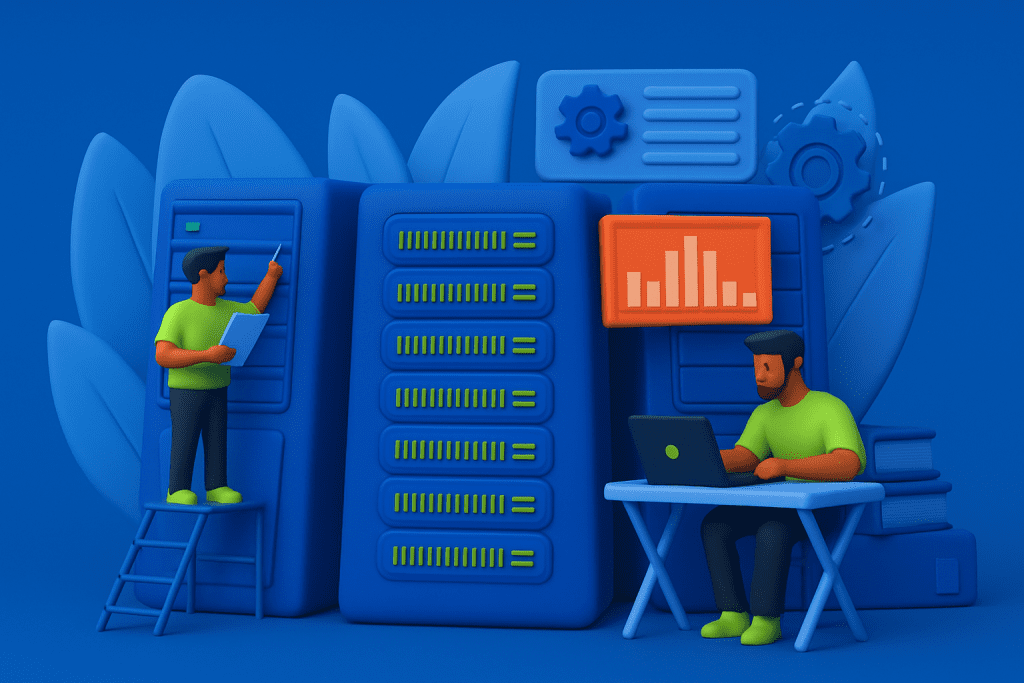The internet might seem weightless, but every click consumes real energy. Every web page load, cloud backup, and video stream depends on physical servers running 24/7, each drawing power and generating heat. As websites grow heavier and data demands surge, the call for green hosting has moved from niche to necessity.
Green hosting refers to web and cloud hosting powered by renewable energy or optimized for energy efficiency. It’s about building digital infrastructure that minimizes carbon emissions and resource waste. The movement toward sustainability isn’t just environmental—it’s economic and ethical. Today, companies are expected to demonstrate social responsibility, and hosting sustainably is one of the most direct ways to do so.
The Environmental Impact of Traditional Data Centers
Modern data centers are the backbone of the internet, but they come at a steep environmental price. According to the International Energy Agency (IEA), data centers account for roughly 2% of global electricity consumption,a figure comparable to the entire aviation industry.
Traditional hosting models rely on thousands of servers running around the clock, even when underutilized. These servers require massive cooling systems, backup generators, and hardware replacements every few years,all of which contribute to a significant carbon footprint.
Key environmental challenges:
- Energy consumption: Constant power draw for servers, networking gear, and cooling infrastructure.
- Carbon emissions: Reliance on fossil-fuel-based electricity in many data center regions.
- Water usage: Many cooling systems consume millions of liters of water annually.
- Electronic waste: Short hardware lifecycles lead to frequent disposal and recycling challenges.
Without intervention, the world’s digital emissions could double by 2030, driven by streaming, AI workloads, and cloud storage expansion.
What Makes Hosting “Green”?
A green hosting provider goes beyond promises, they design their entire infrastructure for efficiency, renewability, and low emissions.
Core principles of green hosting:
- Renewable Energy Sources
Data centers powered by solar, wind, or hydroelectric energy drastically reduce carbon output. Some even operate near renewable farms or purchase Renewable Energy Certificates (RECs). - Energy-Efficient Hardware
Servers are designed for maximum performance per watt. Modern chips, solid-state storage, and optimized cooling technologies reduce waste. - Virtualization and Load Optimization
Instead of idling thousands of servers, green hosts use virtualization to distribute workloads intelligently—spinning up resources only when needed. - Carbon Offsetting and Green Certifications
Certified hosts participate in carbon offset programs and comply with standards such as ISO 14001 (environmental management) or LEED-certified buildings. - Software-Level Efficiency
Optimized network routing, low-latency protocols, and edge caching reduce data transfer energy. Efficient content delivery can lower total power use by up to 30%.
The Business Case for Sustainability
Sustainability is good for the planet, and even better for business.
1. Brand Trust and Differentiation
Consumers, especially Gen Z and millennials, actively support eco-conscious brands. In fact, 78% of buyers say environmental impact influences their purchasing decisions. Hosting on sustainable infrastructure signals responsibility and leadership.
2. Compliance and Corporate Responsibility
Governments and enterprises are increasingly adopting carbon-neutral procurement policies. Working with a green host positions your company to meet compliance standards effortlessly.
3. Cost Efficiency
Energy-efficient infrastructure reduces operational costs. Virtualized environments and optimized utilization often translate to lower long-term hosting expenses.
4. SEO and Conversion Benefits
Search engines prioritize fast, efficient, and optimized websites—and sustainable hosting often delivers exactly that. Eco-conscious branding also boosts conversion rates and customer retention.
How Cloud Providers Are Responding
The world’s largest cloud companies are redefining what’s possible in sustainable infrastructure.
- Google Cloud has been carbon neutral since 2007 and aims to run entirely on carbon-free energy 24/7 by 2030.
- Amazon Web Services (AWS) has pledged to power all operations with renewable energy by 2025.
- Microsoft Azure has committed to being carbon negative by 2030.
Meanwhile, smaller and mid-sized providers are building green-first architectures from the ground up—locating data centers in cooler Nordic regions, leveraging AI-driven cooling management, and signing direct renewable energy contracts.
The Road Ahead: Sustainability as a Hosting Standard
The web’s next evolution is green by default.
Emerging trends shaping the future:
- Carbon Scorecards: Cloud platforms may soon provide transparency into each workload’s carbon intensity.
- AI-Powered Energy Optimization: Machine learning will dynamically reduce server energy use during low-demand periods.
- Developer Responsibility: From efficient code to caching and CDNs, developers will make “green by design” choices standard practice.
The industry’s momentum toward sustainability is irreversible. Businesses that embrace green hosting today will be the ones setting tomorrow’s standards
Ready to host smarter and greener?
Join the movement toward sustainable infrastructure with bagful.net Explore our eco-conscious hosting solutions, reduce your digital carbon footprint, and help build a faster, cleaner internet for everyone.













